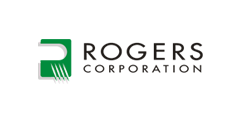SPOILER ALERT SOLVED: ROGERS' MATERIALS EXPERTISE TO THE RESCUE
CUSTOMER PROBLEM :
With their latest vehicle model already in production, an automotive OEM was having issues with their chosen sealing material. Problems were surfacing at both the Tier1 supplier and Tier2 material converter levels.Production yields on the sealing strips for an exterior spoiler were dismal. The strips are meant to serve as a mechanical seal where the spoiler is attached to the vehicle trunk, keeping the two pieces of plastic from rubbing against each other. Without a proper seal, the spoiler could be damaged through abrasion at the point of attachment, or ingress of water or other environmental elements. The OEM had designed in a solid EPDM rubber but soon found that it stretched easily, causing problems in the process of slitting, adding adhesive,and in final assembly. The material would stretch during fabrication then shrink back, causing the adhesive to peel away or the strip to tear. Scrap rates were high across the supply chain and the OEM was concerned that the material could ultimately fail in use, potentially leading to costly product recalls. Without a better, more dimensionally stable solution, their spoiler was effectively“spoiled.”Time was of the essence, as every day of inefficient fabrication and production was costing time and money, and might cause further issues for car buyers down the road.
THE ROGERS SOLUTION:
Working quickly to team with the OEM and supply chain members, Rogers’ technical experts solved the issue with a customized PORON polyurethanes solution cast directly onto polyethylene terephthalate (PET) film with no added adhesive layer. The PET film backing was critical to add dimensional stability to the material throughout the fabrication process. Rogers’ team ran multiple pilot product runs, sampling the customer with a range of materials varying in density and firmness until they found the perfect solution. To further increase yields for fabricators, Rogers provided a custom width to match the length of the final strip, eliminating another source of waste during the slitting and converting process.
|
Case Study |
|
|
|
|
Please see the document for details |
|
|
|
|
|
|
|
|
|
|
|
English Chinese Chinese and English Japanese |
|
|
0717 |
|
|
|
|
|
170-375 |
|
|
103 KB |
- +1 Like
- Add to Favorites
Recommend
All reproduced articles on this site are for the purpose of conveying more information and clearly indicate the source. If media or individuals who do not want to be reproduced can contact us, which will be deleted.


























































































































































































































































































































































































































































































































































































































































































































































































































































































































